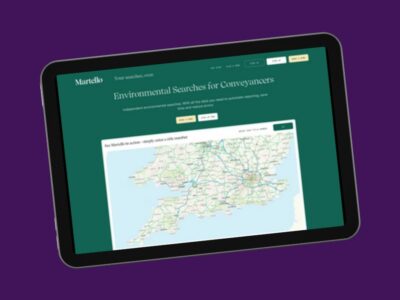Sustainable Drainage Scheme conditions – what they look like and how to approach them – Part 2
In the first part of our 2 part series on SuDS planning conditions we looked at three typical examples of how planning authorities require statements on feasibility for SuDS to be included on a development site.
As a reminder of our third condition example, a typical criteria requirement was added on developing a SuDS Feasibility Report.
Let’s look at this criteria condition and how we help fulfill our clients in answering these questions:
A preliminary SuDS feasibility assessment/identifying:
(i) The existing and proposed Site layouts
- We request the existing and proposed Site layout from our clients along with the existing and proposed impermeable and permeable areas to ensure the context is understood and to calculate existing and proposed runoff rates. It also helps to understand what constraints there might be to certain types and sizes of SuDS on Site.
(ii) The topography of the existing and proposed Site (if known).
- This can have a major influence on overland drainage routes and feasibility for disposal of surface water on the Site. The more detailed a topographic survey provided by the client, the more realistic the assessment of flow and disposal routes can be. Steeply sloping Sites or those with no gradient may have impacts on methods of disposal such as infiltration. There may also be implications on laying drainage pipes, their gradients and cover levels from the ground to the top of the pipe, which may require additional ground works and ground level raising to achieve the required falls.
(iii) The context of the Site in relation to natural and man-made features such as the underlying geology, surface watercourses, flood risk, development within the vicinity such as buildings and sewers.
- Understanding the context of the Site in relation to surrounding natural and man-made features helps inform the drainage strategy. These features underpin the type of potential surface water drainage strategy and the constraints and opportunities within the Site.
(iv) The existing and proposed surface water runoff rates and volumes from the Site.
- GeoSmart use the most up to date methods described within the CIRIA SuDS Manual, Local Council guidance and policy documents and within Environment Agency Guidance to provide runoff rates for 1 in 1, 1 in 30 and 1 in 100 year and volumes in accordance with industry standards. This allows us to calculate the volume of attenuation required on the Site.
(v) The feasibility of alternative discharge points in accordance with the drainage hierarchy.
- Our SD50 (SuDS Infiltration Potential) Map, allows us to investigate the feasibility of infiltration at the Site prior to Site Investigation and infiltration testing. We also use the most up to date mapping and data available to us to locate surface water features and sewer lines within the vicinity of the Site.
(vi) The Local Council’s preferred method of surface water disposal and rate of discharge in the context of the Site.
- We use the Local Council’s most up to date Local Planning and Policy documents to research the surface water drainage requirements in the local area. We normally contact the policy makers and/or drainage officers to discuss surface water requirements, should there be any unknowns associated with this.
(vii) The proposed future use of the Site in terms of water quality and the levels of treatment required before disposing of surface water.
- Once we have established whether there is potential contamination at the Site and whether there is means by which it could impact on underlying aquifers or other sensitive features within the vicinity of the Site, we will provide a risk rating to the site which recommends the approach to treatment
(viii) The proposed timetable for implementation of SuDS.
- Our report would not include this detailed information as it is only known and set by the developer and / or the client.
(iv) Maintenance schedules relating to the management and maintenance of SuDS within the Site.
- The management and maintenance of SuDS over the lifetime of the development is required to confirm the responsibility to the Local Council.
- If the SuDS scheme is adopted, it is likely that the Local Council will undertake the associated maintenance; however more and more schemes are being managed and paid for by the residents or businesses operating out of the development. The SuDSmart Pro report provides a basic maintenance schedule which relates to potential SuDS at the Site. In practice, the client should put together a detailed SuDS management and maintenance schedule based upon the final SuDS scheme and the likely maintenance company appointed to look after this.
Once all constraints and opportunities have been identified and a potential SuDS strategy has been formulated, recommendations will be made.
If the Site Investigation and infiltration testing have been undertaken then commonly the only further action required would be to finalise the plans and drawings based upon the recommendations within the SuDSmart Pro report.
Once the report is submitted and the Planning Authority have approved the condition, the detailed drainage design can normally be dealt with through a pre-commencement condition as long as the outline drainage strategy is approved by the Local Council or the Lead Local Flood Authority.
Get in touch!
Do you have a Site with a SuDS related or Flood Risk condition? Contact us to discuss our SuDSmart and FloodSmart Reports.
Understand planning conditions better
We will be holding a CPD breakfast briefing in London on 3 November, designed for architects, planning consultants and property companies.
It will examine the legal framework for SuDS, what makes a good SuDS design and views from planning authorities on how they want to see SuDS in action.
Ensure you and your firm understand how to manage SuDS conditions in pre and master planning applications better.



